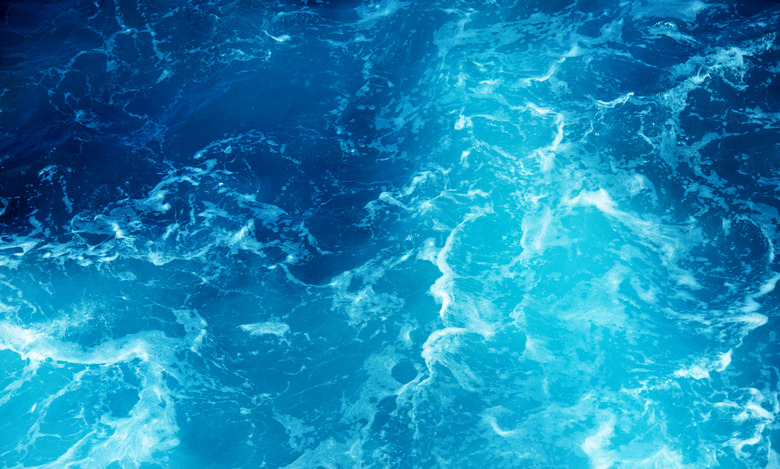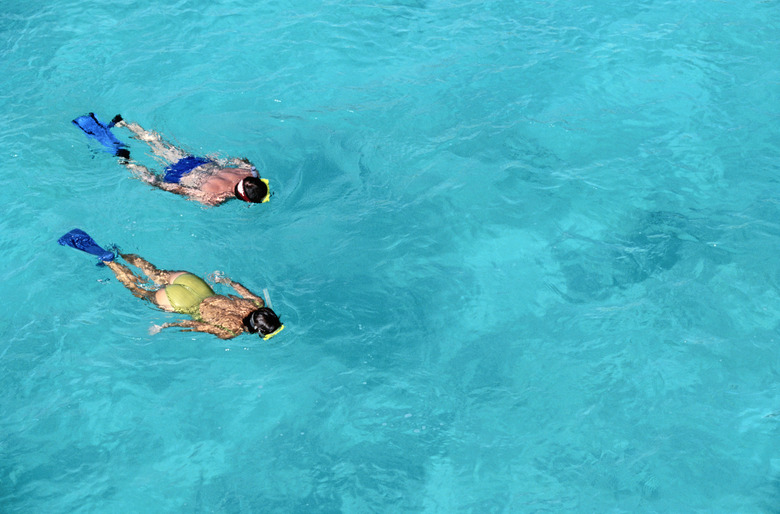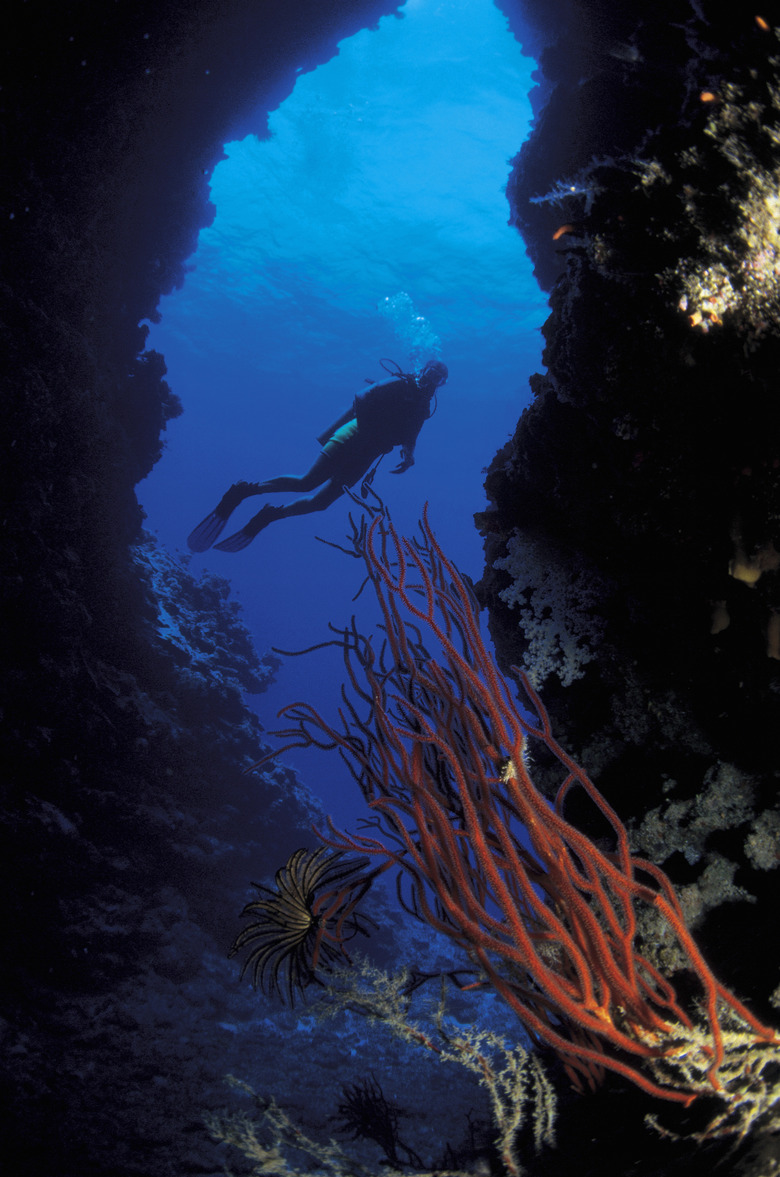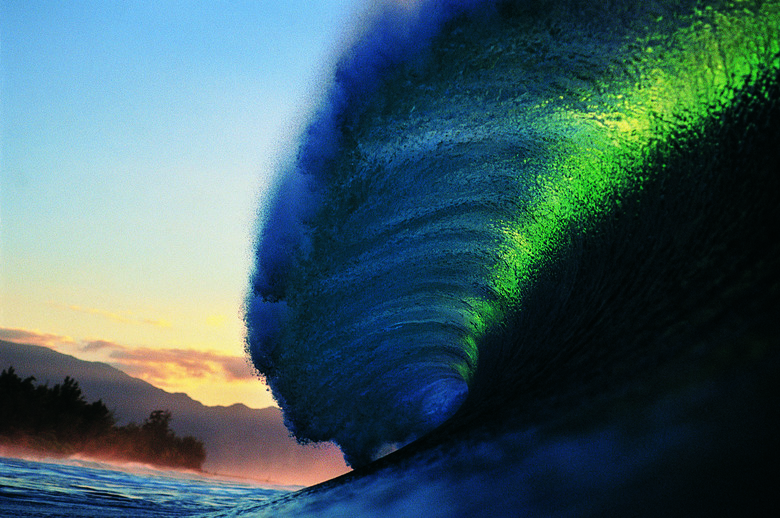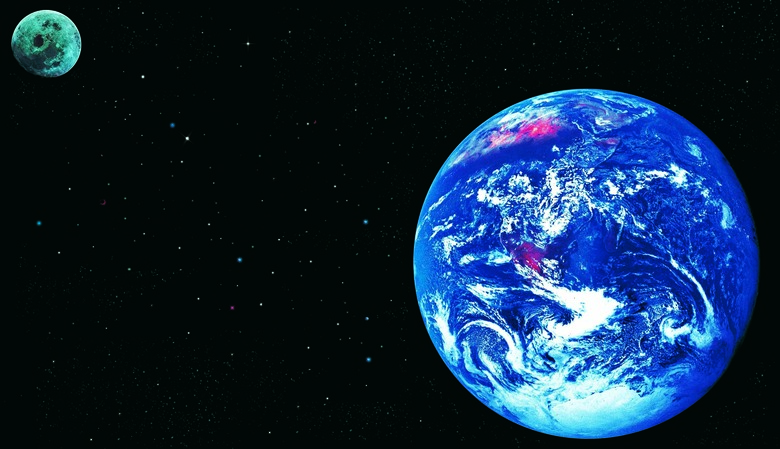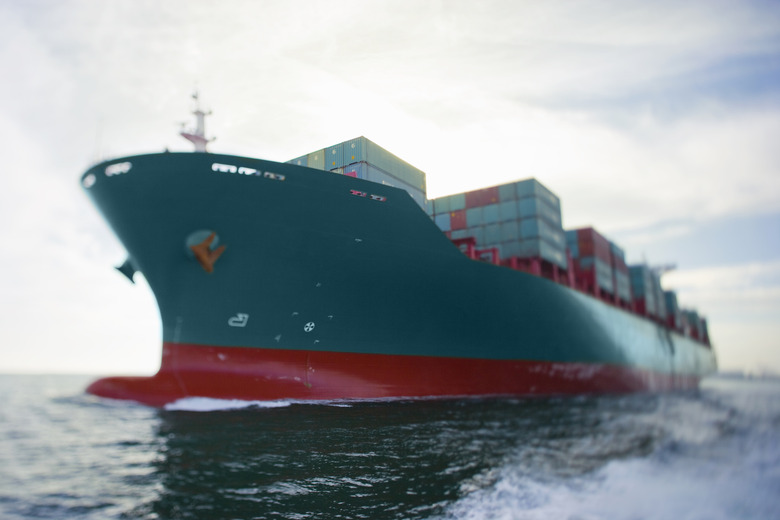Two Types Of Ocean Currents
Ocean currents are patterns of water movement and patterns that influence climate zones and weather patterns around the world. They're primarily driven by winds and by seawater density, although many other factors – including the shape and configuration of the ocean basin they flow through – influence them. The two basic types of currents – surface and deep-water currents – help define the character and flow of ocean waters across the planet.
TL;DR (Too Long; Didn't Read)
Two major kinds of currents define the planet's oceans: surface currents driven by wind and deep-water currents driven by variations in seawater density.
Surface Currents
Surface Currents
Surface currents refer to movement of the top layer of ocean water – the upper 330 feet or so – primarily driven by wind. The large-scale circulation of these surface currents roughly mirrors the large-scale circulation of air, which most simply derives from unequal heating of the planet's surface by the sun. Currents form rotating systems in the middle of major ocean systems called gyres. Like the winds controlling them, these surface currents help redistribute heat at a planetary scale: Generally speaking warm water flows toward the poles and cold water flows toward the equator.
Deep-water Currents
Deep-water Currents
Deep-water currents describe water movement patterns far below the ocean's surface and the influence of the wind. Instead of airflow, these currents primarily arise from variations in the density of seawater, controlled by its temperature and salt content (salinity). Their movement forms thermohaline circulation ("thermo" meaning temperature, "haline" meaning salinity) which crosses ocean basins and links to surface currents in what's called the "global conveyor belt."
In very simplified form, water moving into the polar regions gets cold enough to freeze into ice, leaving its share of salt behind; this makes the underlying water saltier, which in turn makes it denser. This cold, dense, saltier water sinks to the seafloor, replaced by surface waters that repeat the process. The deep current moves toward the equator and warms up, becoming less dense and rising to the surface in "upwellings."
Measuring Currents
Measuring Currents
Both types of ocean currents are measured using units called Sverdrup (Sv). Sverdrup measures current flow rates, where 1 Sv is equal to 10 to the 6th power cubic meters per second, or about 265 million gallons per second. While ocean currents themselves can have flow rates of hundreds or thousands of Sv per second, the total Sv flow for all the freshwater sources in the world is only equal to about 1 Sv: a demonstration of the massive scale of ocean currents compared to the flow of rivers.
Currents vs. Tides
Currents vs. Tides
Currents can be distinguished from tides, regular increases and decreases in the level of the sea surface. As the Earth rotates around the sun and the moon, the gravitational pull of each celestial body causes ocean levels to be slightly deeper at certain times. This creates high and low tides twice a day, which occur at different times in different parts of the world. When the moon, sun, and Earth line up, particularly strong tides ("spring tides") result that can dramatically affect water levels. The action created by tides can impact both types of currents by modifying depth levels and water displacement.
Ocean Currents & Humankind
Ocean Currents & Humankind
Ocean currents hugely impact humankind and the biosphere in general, first and foremost due to their influence on climate. Currents also affect people in other ways, though. Early on, the study of currents was important due to shipping concerns: A knowledge of ocean currents allowed sailors to safely reach their destination, or to get there more quickly. Today, an understanding of ocean currents can dramatically reduce shipping times and fuel costs. Competitive sailors also closely surface currents to improve race results.
Cite This Article
MLA
Beach, Emily. "Two Types Of Ocean Currents" sciencing.com, https://www.sciencing.com/two-types-ocean-currents-5209213/. 23 April 2018.
APA
Beach, Emily. (2018, April 23). Two Types Of Ocean Currents. sciencing.com. Retrieved from https://www.sciencing.com/two-types-ocean-currents-5209213/
Chicago
Beach, Emily. Two Types Of Ocean Currents last modified March 24, 2022. https://www.sciencing.com/two-types-ocean-currents-5209213/
